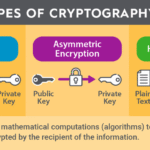In an age where information is akin to currency, the necessity of encryption in safeguarding sensitive data cannot be overstated. But what would happen if this essential protective barrier were to falter? What could be at stake in such a scenario? The vacillation between safety and exposure underscores the pivotal role encryption plays in the realm of information security. This article elucidates the multifarious dimensions of encryption, its mechanisms, and its irrefutable importance in our increasingly digitized world.
Encryption, at its core, is a method of obfuscating information so that only authorized parties can decipher it. This transformation is accomplished using algorithms, which serve as a recipe for encoding and decoding data. The process converts legible information into an unreadable format—a cipher—rendering it unintelligible to unauthorized observers. The most common forms of encryption include symmetric and asymmetric encryption, each with its unique architecture and operational modalities.
Symmetric encryption employs the same key for both encryption and decryption. This method is relatively straightforward, but it poses a notable vulnerability: if the key is intercepted, the integrity of the entire encryption system crumbles. In contrast, asymmetric encryption utilizes a pair of keys—one public and one private. This paradigm bolsters security by allowing the public key to be distributed widely, while the private key remains confidential. Consequently, even if the public key is compromised, the system retains an additional layer of protection.
The ramifications of inadequate encryption can be dire. Data breaches expose sensitive information, leading to identity theft, financial loss, and reputational damage. For instance, in 2017, the Equifax breach resulted in the exposure of personal information of approximately 147 million individuals. This catastrophic event highlights the chilling effects of poor data protection practices. It compels organizations to ponder: is their encryption robust enough to withstand nefarious attacks?
Moreover, encryption is not merely a preventative measure; it is a legal obligation for numerous industries. For instance, the Health Insurance Portability and Accountability Act (HIPAA) mandates that healthcare organizations employ encryption to protect personal health information. Similarly, the General Data Protection Regulation (GDPR) in Europe emphasizes securing sensitive data through encryption as a critical standard for compliance. Failing to adhere to these regulations not only jeopardizes sensitive information but also incurs severe penalties.
In addition to its protective capabilities, encryption serves as a facilitator of trust in digital transactions. When customers share their financial information online, they expect a certain level of security. Encryption assures users that their data is not merely floating in cyberspace but is encased in a fortified vault. This newfound trust engenders loyalty and reaffirms the relationship between businesses and their patrons.
Yet encryption is not without its challenges. As cybercriminals become increasingly adept at circumventing security measures, organizations face an ever-evolving arms race. The sophistication of threats such as ransomware and phishing attacks necessitates that encryption methods continually evolve. What good is an encryption protocol if it becomes obsolete in the face of advancing technology? Thus, it becomes imperative for organizations to not only adopt robust encryption practices but also to stay abreast of the latest developments in cybersecurity.
Furthermore, there exists the potential for encryption to be weaponized. State actors may utilize sophisticated encryption techniques to shield their clandestine operations from scrutiny. In this context, encryption becomes not merely a tool for protection but also a means of concealing wrongdoing. The ethical implications are profound. Society must grapple with the delicate balance between individual privacy and national security. To what extent should encryption be permissible in shielding potentially illicit activities?
Another issue that permeates the discussion around encryption is the concept of “backdoors.” Advocates for law enforcement argue that the introduction of backdoors—intentional vulnerabilities that enable authorized parties to bypass encryption—could facilitate criminal investigations. However, this proposition presents its own dilemmas. The very existence of a backdoor undermines the purpose of encryption, making systems more susceptible to unauthorized access. It raises an unsettling question: can one truly create a secure backdoor, or would it merely serve as an invitation for exploitation?
Despite these challenges, the imperative to embrace encryption is irrefutable. Organizations ought to foster a culture of security, replete with comprehensive training that emphasizes the necessity of encryption. Regular audits and assessments of one’s encryption strategies will fortify defenses and bolster resilience against potential breaches. Cybersecurity is not a static endeavor; it is a dynamic field that necessitates ongoing vigilance.
In summary, encryption represents a cornerstone of data protection in our information-laden society. Its multifaceted nature allows it to serve various purposes, from securing personal information to establishing trust between consumers and businesses. Yet the ever-present threats in cyberspace compel constant adaptation and evolution of encryptive measures. As we navigate this digital frontier, the question remains—can we keep pace with technological advancements while ensuring that encryption continues to fulfill its protectory role? The future of sensitive information hinges on our collective commitment to uphold and advance these vital defense mechanisms.









Leave a Comment